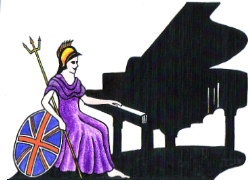Teachers, Accompanists and Piano Entertainers in the UK

UK Piano Page

Browse Locations England » London » Strand on the Green
131 Moneynick Road
Randalstown, County Antrim BT41 3HU
Northern Ireland
We Keep a wide range of upright and grand pianos
Grove House
Wade House Road. Shelf
Halifax, West Yorkshire HX3 7PF
England
GSG Pianos is one of the North of England’s
878 Carmarthen Road
Swansea, Swansea SA5 8HR
Wales/Cymru
Discover the special nature of a visit to our
Unit 17 Chaucer Industrial Park, Watery Lane
Sevenoaks
Kemsing, Kent TN15 6PJ
England
94 Kingston Road
Wimbledon
Merton, London SW19 1LA
England
Music Festival for performers and guests Our 10th
18-06-2022 01:30PM
The Morecambe Bay Piano Group was set up to extend
11-12-2021 02:00PM
The Morecambe Bay Piano Group was set up to extend
08-01-2022 02:00PM
The Morecambe Bay Piano Group was set up to extend
12-02-2022 02:00PM